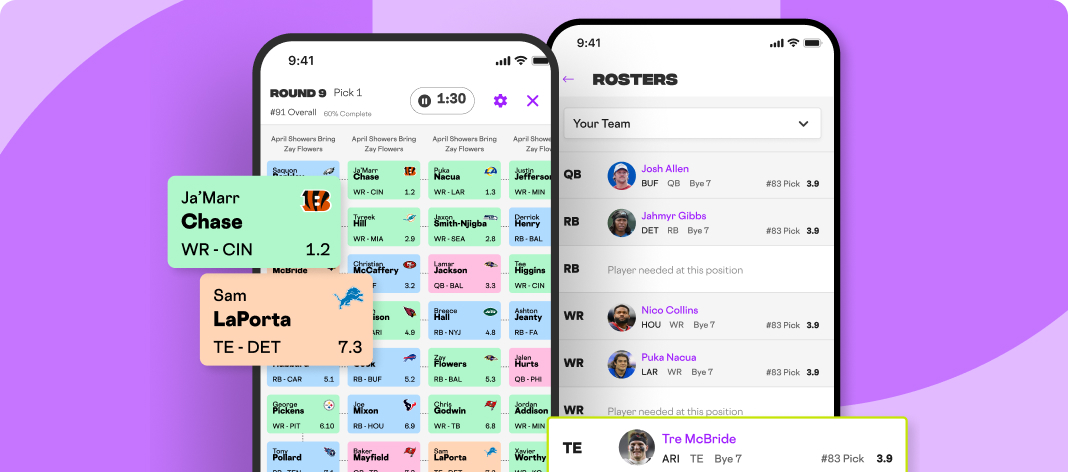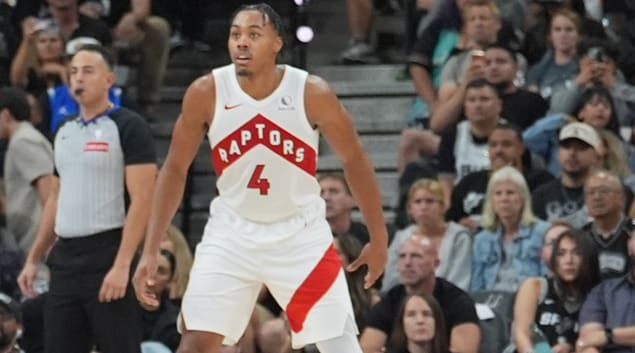Fantasy basketball success largely depends on counting stats, which makes playing time crucial regardless of efficiency metrics. Finding players with high minutes in your NBA projections becomes essential for maximizing value in both season-long leagues and daily fantasy sports lineups.
While no projection system guarantees exact outcomes — players appear on the NBA injury report, encounter foul trouble or simply have unexpected performances — key indicators help fantasy managers predict playing time and performance trends throughout the season. Some qualitative data, like NBA depth charts, also comes into play.
What Projected Minutes Mean for NBA Fantasy Analysis
Every night, NBA teams construct their rotations based on multiple factors: opponent matchups, rest schedules, back-to-back games, and historical lineup patterns. Each player receives projected minutes based on these variables, representing expected floor time for accumulating fantasy-relevant statistics.
Take Anthony Edwards as an example: he averaged 36.3 minutes per game last season, playing between 33-39 minutes in 53 of his 79 games. This consistency makes him valuable for fantasy basketball rankings and a reliable building block for any roster-construction strategy.
More minutes directly translate to more opportunities for points, rebounds, assists, steals and blocks. Your fantasy basketball draft strategy should prioritize players with secure roles and substantial projected playing time, as these form the foundation of successful teams.
How RotoWire Calculates and Updates Projected Minutes
Multiple factors influence projected minutes calculations:
- Historical usage patterns from previous games and seasons.
- Teammate injuries that create opportunities for increased roles.
- Opponent strength and potential blowout scenarios.
- Schedule density including back-to-back games and travel.
Consider Milwaukee's backcourt situation: with Damian Lillard's departure creating a void, Kevin Porter Jr.'s projected minutes jumped from 19.9 to 31.5 per game. This dramatic increase significantly impacts his fantasy basketball auction values and overall draft positioning.
These projections update constantly throughout each day. When a starter gets injured or NBA lineups change unexpectedly, affected players see immediate adjustments to their projected minutes and accompanying statistical forecasts.
Identifying Daily Fantasy Value Through Minutes
While playing time isn't the sole determinant of fantasy success, it provides the foundation for statistical accumulation. Washington's Bilal Coulibaly finished in the top 50 in minutes per game as a rookie but struggled to convert that opportunity into consistent fantasy production due to efficiency and role limitations.
However, in daily fantasy formats, players receiving unexpected minute bumps — whether through injuries, rest days, or tactical changes — often provide exceptional value at reduced salaries. These situations create the pricing inefficiencies that separate successful DFS players from the field.
Smart fantasy managers bookmark projection updates as part of their research routine, especially when using comprehensive tools like RotoWire's fantasy basketball draft kit resources.
Why Playing Time Equals Profit
Players cannot contribute to your fantasy team while sitting on the bench. Beyond the obvious statistical benefits, increased floor time provides more opportunities for the counting stats that drive fantasy scoring in most formats.
Savvy managers use NBA fantasy ADP data alongside projected minutes to identify potential draft steals — players whose minute projections suggest higher value than their current draft position indicates. These insights prove particularly valuable when constructing your fantasy basketball cheat sheet.
Playing time becomes especially critical during specific periods:
- Late season when contending teams rest stars for playoff preparation.
- Tanking situations where rebuilding teams prioritize young player development.
- Injury situations that create temporary opportunities for bench players.
Each scenario creates ripple effects throughout team rotations, making projection monitoring essential for both short-term and long-term fantasy success.
Maximizing Your Fantasy Basketball Strategy
Projected minutes serve as the foundation of effective fantasy basketball and daily fantasy strategy. Players seeking comprehensive projection data, real-time updates and expert analysis should subscribe to RotoWire for access to professional-grade tools and insights.
Success in fantasy basketball requires staying ahead of lineup changes, injury developments and playing time trends. Players who do their own homework with NBA fantasy rankings to tweak minutes projections and accompanying stats often find the most success.
With the right resources and consistent monitoring, projected minutes become a powerful weapon for building winning teams and profitable daily lineups throughout the NBA season.


































